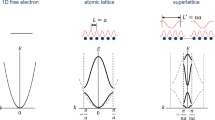Abstract
We calculate the conductivity of graphene in three monolayer graphene double-layer structures taking into account the presence of correlations of charged impurities. We use the Boltzmann transport theory and continuum model for the structure factor S\((\mathbf {q})\) to study the electrical conductivity of monolayer graphene in presence of the second layer (bilayer graphene, monolayer graphene, or two-dimensional electron gas (2DEG)) due to the screened Coulomb scattering at T = 0 K for different values of correlation length \(r_{\text {\tiny 0}}\), interlayer distance d and dielectric constant \(\epsilon _{\text {\tiny 2}}, \epsilon _{\text {\tiny 3}}\), and 2DEG material parameters. We find that for considered double-layer systems, the electrical conductivity \(\sigma \) increases with decreasing d for all values of \(r_0\) and increases strongly (slightly) with increasing \(\epsilon _2(\epsilon _3)\). We also show that \(\sigma \) increases slightly (considerably) with increasing \(\epsilon _3\) for \(\epsilon _3 = \epsilon _{2DEG}(\epsilon _3 = \epsilon _2 = \epsilon _{2DEG})\) and the influence of correlations on \(\sigma \) is negligible for low impurity concentration of layer I \(n_{i1}\) (\(n_{i1} \preceq \) \( 10^{12} {\text{ cm }}^{-2}\)).
GraphicAbstract












Similar content being viewed by others
Data Availability Statement
This manuscript has no associated data or the data will not be deposited. [Authors comment: This is a theoretical study and no experimental data has been listed.]
References
S.V. Morozov et al., Phys. Rev. Lett. 100, 016602 (2008)
E. MeCann, V.I. Falko, Phys. Rev. Lett. 96, 086805 (2006)
S. Das Sarma, E.H. Hwang, E. Rossi, Phys. Rev. B 81, 161407 (2010)
E.H. Hwang, S. Adam, S. Das Sarma, Phys. Rev. Lett. 98, 186806 (2007)
E.H. Hwang, S. Das Sarma, Phys. Rev. B 75, 205418 (2007)
S. Adam, E.H. Hwang, V.M. Galitski, S. Das Sarma, PNAS 104, 18392 (2007)
J.H. Chen, C. Jang, S. Adam, M.S. Fuhrer, E.D. Williams, M. Ishigami, Nat. Phys. 4, 377 (2008)
E.H. Hwang, S. Das Sarma, Phys. Rev. B 77, 195412 (2008)
S. Adam, S. Das Sarma, Solid State Commun. 146, 356 (2008)
E. Rossi, S. Das Sarma, Phys. Rev. Lett. 101, 166803 (2008)
E. Rossi, S. Adam, S. Das Sarma, Phys. Rev. B 79, 245423 (2009)
E.H. Hwang, S. Das Sarma, Phys. Rev. B 79, 165404 (2009)
D.K. Patel, A.C. Sharma, S.S.Z. Ashraf, Phys. Stat. Sol. (b) 252, 282 (2015)
H. Mousavi, J. Khodadadi, Physica E 50, 11 (2013)
E.H. Qiuzi Li, E. Hwang, Rossi Solid State Commun. 152, 1390–1399 (2012)
J. You, M.S. Fuhrer, Phys. Rev. Lett. 107, 206601 (2011)
T.M. Radchenko, A.A. Shylau, I.V. Zozoulenko, Phys. Rev. B 86, 035418 (2012)
S. Das Sarma et al., Phys. Rev. B 91, 205304 (2015)
Q. Li, E.H. Hwang, E. Rossi, D. Sarma, Phys. Rev. Lett. 107, 156601 (2011)
B. Amorim, N.M.R. Peres, J. Phys.: Condens. Matter 24, 335602 (2012)
N.M.R. Peres, J.M.B. Lopes Dos Santos, A.H. Castro Neto, EPL 95, 18001 (2011)
F. Parhizgar, R. Asgari, Phys. Rev. B 90, 035438 (2014)
D. Van Tuan, Nguyen Quoc Khanh. Physica E 54, 267 (2013)
A. Principi, M. Carrega, R. Asgari, V. Pellegrini, M. Polini, Phys. Rev. B 86, 085421 (2012)
G. Gonzalez de la Cruz, Solid State Commun. 213–214, 6 (2015)
M. Rodriguez-Vega, J. Fischer, S. Das Sarma, E. Rossi, Phys. Rev. B 90, 035406 (2014)
N. Van Men, N.Q. Khanh, Phys. Lett. A 381, 3779 (2017)
D.T.K. Phuong, N. Van Men, Solid State Commun. 314–315, 113942 (2020)
A. Gamucci et al., Nat. Commun. 5, 5824 (2014)
B. Scharf, A. Matos-Abiague, Phys. Rev. B 86, 115425 (2012)
N.Q. Khanh, D.K. Linh, Superlatt. Microstruct. 116, 181–190 (2018)
E. Junhua Zhang, Rossi. Phys. Rev. Lett. 111, 086804 (2013)
J. Hu et al., Nano Energy 40, 42 (2017)
A. Perali, D. Neilson, A.R. Hamilton, Phys. Rev. Lett. 110, 146803 (2013)
N.Q. Khanh, D.K. Linh, Superlatt. Microstruct. 114, 406–415 (2018)
N.Q. Khanh, D.K. Linh, Int. J. Mod. Phys. B 34(27), 2050254 (2020)
M. Lv, S. Wan, Phys. Rev. B 81, 195409 (2010)
P.F. Maldague, Surf. Sci. 73, 296 (1978)
V. Van Tai, N.Q. Khanh, Superlatt. Microstruct. 88, 474 (2015)
V. Van Tai, N.Q. Khanh, Superlatt. Microstruct. 100, 792 (2016)
A. Konar, T. Fang, D. Jena, Phys. Rev. B 82, 115452 (2010)
W. Neil, N. Ashcroft, David Mermin, Solid State Physics (Thomson Learning Inc., New York, 1976)
Author information
Authors and Affiliations
Contributions
Le Kieu Oanh and Dang Khanh Linh did all calculations and wrote the manuscript. Nguyen Quoc Khanh supervised the project and improved the manuscript.
Corresponding author
Supplementary Information
Below is the link to the electronic supplementary material.
Appendix A: The structure of supplementary material
Appendix A: The structure of supplementary material
The supplementary material to the paper consists of the following subsections:
-
A
The dependence of the effective interaction \(W_{11}\)(q) between correlated impurities and electron in layer I as a function of interlayer distance d.
-
B
The dependence of the resistivity of layer I as a function of the impurity density \(n_{i1}\) for different values of \(n_1\).
-
C
The dependence of the resistivity of layer I as a function of the impurity density \(n_{i1}\) for different value of \(\epsilon _2\).
Rights and permissions
About this article
Cite this article
Oanh, L.T.K., Khanh, N.Q. & Linh, D.K. Effect of charged impurity correlations on electrical conductivity in monolayer graphene double-layer systems. Eur. Phys. J. B 95, 10 (2022). https://doi.org/10.1140/epjb/s10051-021-00273-x
Received:
Accepted:
Published:
DOI: https://doi.org/10.1140/epjb/s10051-021-00273-x




